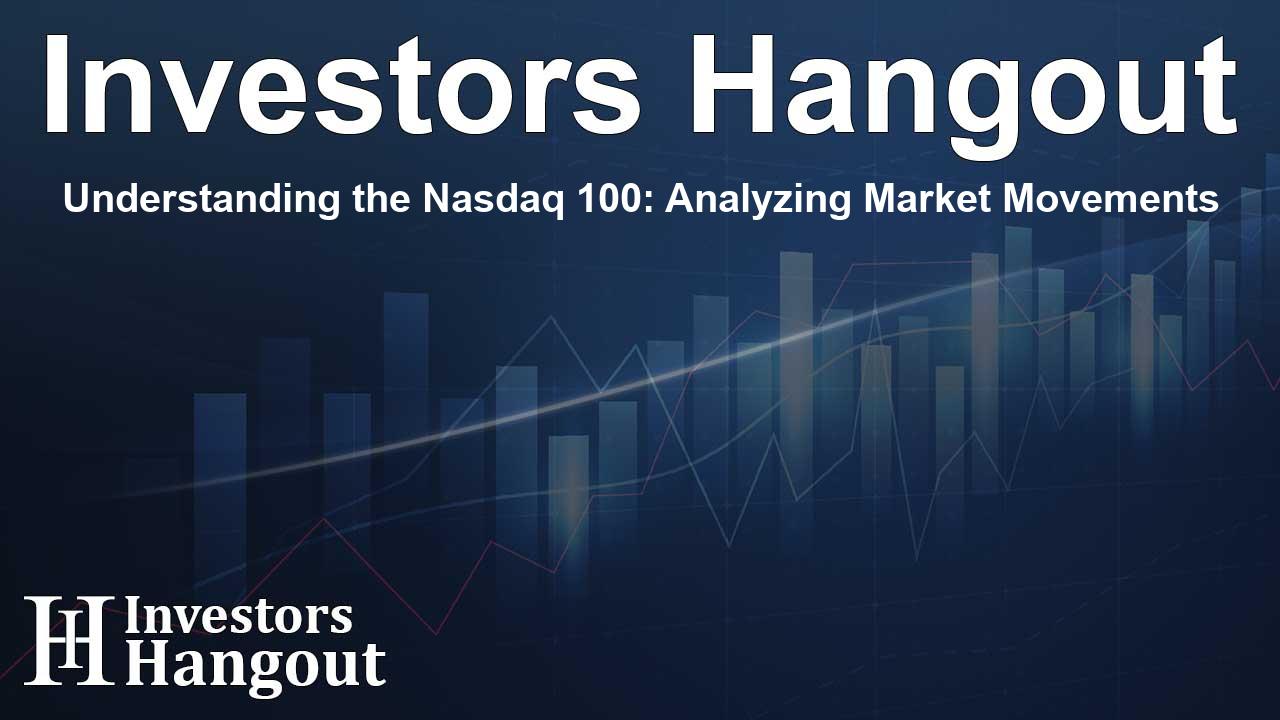Understanding the Nasdaq 100: Analyzing Market Movements

Understanding the Nasdaq 100's Recent Movements
The Nasdaq 100 has been the subject of extensive analysis recently, particularly focusing on an interesting pattern known as the ending diagonal (ED). This pattern is pivotal for predicting future movements of this widely followed index. For traders who are either seasoned or just starting out, grasping these patterns can provide significant insight into potential market behavior.
A Look into the Ending Diagonal Pattern
For those who may be unfamiliar, an ending diagonal pattern usually indicates a final phase of a trend before a reversal or significant change in market direction occurs. Over the past months, experts have closely monitored this pattern within the Nasdaq 100 index. Their analyses pointed to specific target levels and warned of potential risks associated with market fluctuations.
Recent Predictions and Movements
Recent updates on the index suggested that the Nasdaq 100 had an upswing towards a crucial target of 21868, reaching a peak of 22133. However, subsequent events erased profits quickly, reminding traders of the volatile nature of this market. A notable decrease to 20913 further exposed the index to careful scrutiny.
Technical Analysis Insights
In performing technical analysis, many traders utilize graphical representations, such as daily charts, that highlight the Elliott Wave counts and relevant indicators. This method allows for a better visual understanding of where the index may be heading next. The expectation is that, having hit the target zones, the index will rest around the 20300-600 levels before mounting another rally towards higher targets.
Potential Future Outlooks for Nasdaq 100
Looking ahead, if the Nasdaq 100 maintains crucial support levels and manages to hold above significant highs, traders can anticipate a bullish run, with forecasts suggesting a potential surge to 22825-23400. This prospective rally depends heavily on market behaviors in the days to come and is subject to the volatility that characterized recent market movements.
Conclusions on Market Behavior
The fluctuations of the Nasdaq 100 reveal much about overall market sentiment. As traders engage with this index, recognizing patterns can help craft strategies that may lead to successful trading in unpredictable conditions. Moving forward, it's essential to stay aware of potential warning levels and engage with reliable analytical methods.
Frequently Asked Questions
What is an ending diagonal pattern in the Nasdaq 100?
An ending diagonal pattern indicates potential reversals in market trends, signifying the final stages before a significant shift occurs.
How high did the Nasdaq 100 index recently peak?
The Nasdaq 100 index reached a recent peak of 22133, before a notable retreat.
What are the projected support levels for the Nasdaq 100?
Experts are anticipating support levels in the range of 20300-600 for the Nasdaq 100 in the near future.
How can technical analysis aid in trading the Nasdaq 100?
Technical analysis provides traders with insights into potential movements through patterns and historical data, improving decision-making in a volatile market.
What should traders monitor in the Nasdaq 100 moving forward?
Traders should monitor key resistance and support levels, keeping an eye on market conditions and patterns that may signal future movements.
About Investors Hangout
Investors Hangout is a leading online stock forum for financial discussion and learning, offering a wide range of free tools and resources. It draws in traders of all levels, who exchange market knowledge, investigate trading tactics, and keep an eye on industry developments in real time. Featuring financial articles, stock message boards, quotes, charts, company profiles, and live news updates. Through cooperative learning and a wealth of informational resources, it helps users from novices creating their first portfolios to experts honing their techniques. Join Investors Hangout today: https://investorshangout.com/
Disclaimer: The content of this article is solely for general informational purposes only; it does not represent legal, financial, or investment advice. Investors Hangout does not offer financial advice; the author is not a licensed financial advisor. Consult a qualified advisor before making any financial or investment decisions based on this article. The author's interpretation of publicly available data presented here; as a result, they should not be taken as advice to purchase, sell, or hold any securities mentioned or any other investments. If any of the material offered here is inaccurate, please contact us for corrections.